Chronological Axis
Aeneolithic Age
(late 5th millennium B.C. - early 3rd millennium B.C.)
The archaeological collections related to this period are the most representative ones. The development of material and spiritual culture testifies to the existence of different communities of farmers and nomadic cattle-breeders. Representatives of the Cucuteni-Tripolye culture inhabited the vast territory from the Carpathians to Dnieper for about 1,500 years (late 5th millennium B.C. – early 3rd millennium B.C.).
In the territory of the Republic of Moldova there are known more than 600 settlements of farmers, some of which were archaeologically investigated: Floresti, Rogojeni, Rusestii Noi, Radulenii Vechi, Petreni, Varvareuca, Brinzeni, etc. At this time there were first produced metal (copper) items. Tools made of bone and stone are predominant. The earthenware collection is remarkable for the variety of vessels decorated with carving or painted in diverse ornamental styles. The ornamental compositions contain cosmologic scenes, astral symbols, fantastic animals, and anthropomorphic deities. The spiritual life of the communities is represented by an impressive collection of zoo- and anthropomorphic figurines.
At the same time in the south of the Prut-Dniester area there was spread the Bolgrad-Aldeni culture represented by an impressive material.
Cattle-breeding tribes from North-Pontic steppes, which are represented here by the archaeological monuments of the Suvorovo-Novodanilovca and Cernavoda type, played an important part in the history of Aeneolithic communities. The stages of transition from the Aeneolithic to the Bronze Age in the Prut-Dniester area are represented by the archaeological cultures like the Brinzeni, Gordinesti, and Usatovo ones, which have harmoniously combined elements of the Cucuteni civilization and features of the cultures of the North-Pontic cattle-breeders identified with the ancient Indo-Europeans.
| 1.Vessel, the Bolgrad-Aldeni culture |
| |
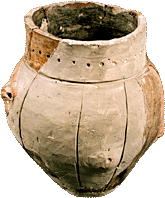
|
| |
|
| 2.Vessel, the Bolgrad-Aldeni culture |
| |
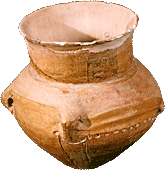
|
| |
|
| 3.Female figurine of “Orante” type, the Bolgrad-Aldeni culture |
| |
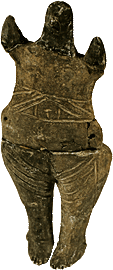
|
| |
|
| 4.Painted amphora with zoomorphic representations, the Late Cucuteni-Tripolye culture |
| |
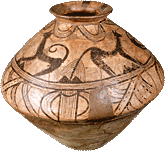
|
| |
|
| 5.Head of anthropomorphic figurine representing a slipping female deity, the Late Cucuteni-Tripolye culture |
| |
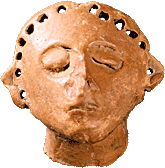
|
| |
|
| 6.Anthropomorphic top of lid representing male deity, the Early or the Middle Cucuteni-Tripolye culture |
| |
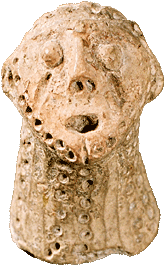
|
| |
|
| 7. Female figurine sitting on the zoomorphic “throne”, the Early Cucuteni-Tripolye culture |
| |
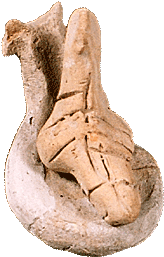
|
| |
|
| 8.Female figurine, the Early Cucuteni-Tripolye culture |
| |
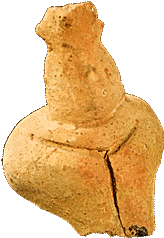
|
| |
|
| 9.Stemmed “fruit dish” vessel with lid, with incised and excised decoration, the Early Cucuteni-Tripolye culture |
| |
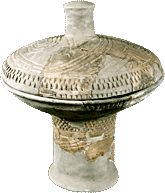
|
| |
|
| 10.Stemmed “fruit dish” vessel with incised and excised decoration, the Early Cucuteni-Tripolye culture |
| |
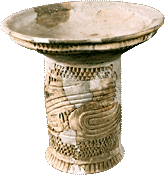
|
| |
|
| 11.Stemmed “fruit dish” vessel with painted design, the Middle Cucuteni-Tripolye culture |
| |
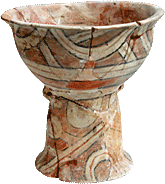
|
| |
|
| 12.Painted anthropomorphic amphora with lid, the Middle Cucuteni-Tripolye culture |
| |
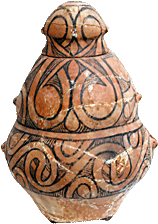
|
| |
|
| 13.Painted amphora with representation of the Great Goddess possessing animals, the Late Cucuteni-Tripolye culture |
| |
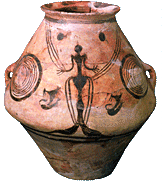
|
| |
|
| 14.Female figurine, the Late Cucuteni-Tripolye culture |
| |
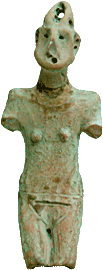
|
| |
|
| 15.Bowl with zoomorphic representations, the Late Cucuteni-Tripolye culture |
| |
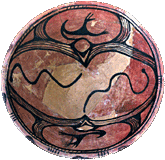
|
| |
|
| 16.Painted pear-shaped vessel, the Late Cucuteni-Tripolye culture |
| |
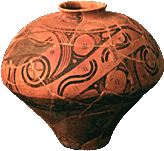
|
| |
|
| 17.Painted vessel, the Late Cucuteni-Tripolye culture |
| |
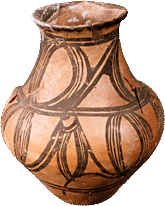
|
| |
|
| 18.Female figurines, the Late Cucuteni-Tripolye culture |
| |
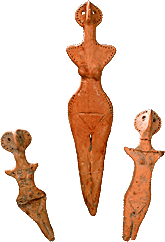
|
| |
|
| 19.Female figurines, the Late Cucuteni-Tripolye culture |
| |

|
| |
|
| 20.Painted amphora, the Late Cucuteni-Tripolye culture |
| |
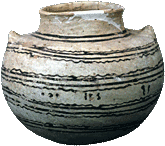
|
| |
|
| 21. Copper items, the Middle Cucuteni-Tripolye culture |
| |
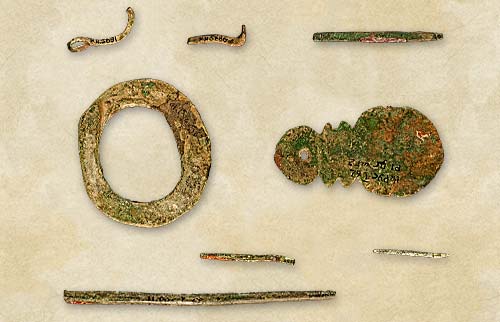
|
| |
|
| 22. Painted dishes and bowls, the Late Cucuteni-Tripolye culture |
| |
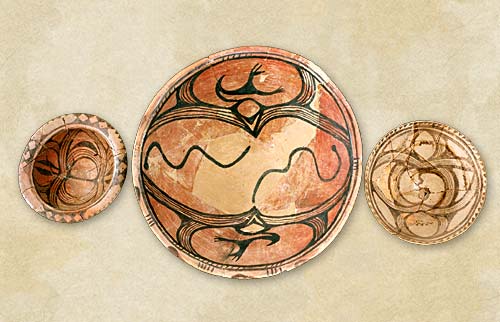
|
| |
|
| 23.Painted vessels, the Middle Cucuteni-Tripolye culture |
| |
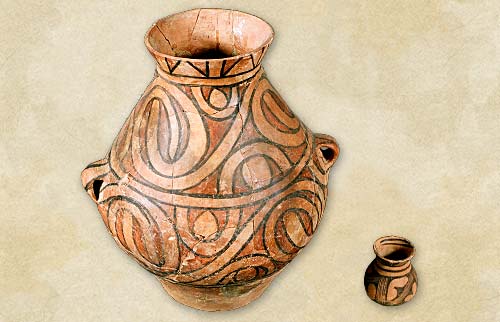
|
| |
|
| 24.Binocular vessel, the Middle Cucuteni-Tripolye culture |
| |
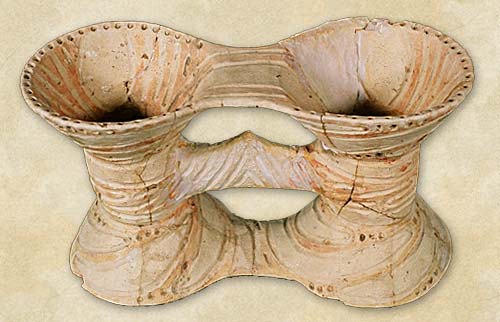
|
| |
|
| 25.Figurine of a bull, the Late Cucuteni-Tripolye culture |
| |
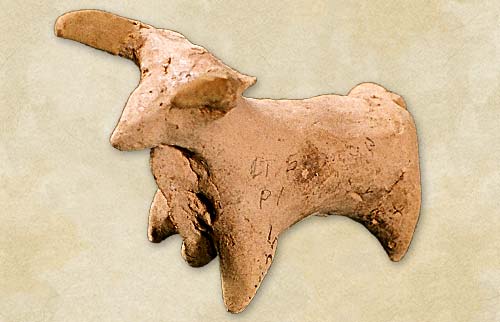
|
| |
|
| 26. Painted vessels: lidded anthropomorphic amphora representing a female deity and bowl, the Middle Cucuteni-Tripolye culture |
| |
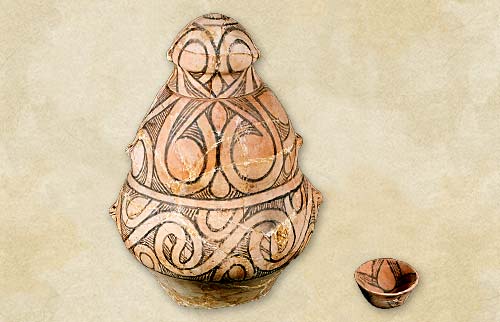
|
| |
|
| 27. Binocular vessel, the Middle Cucuteni-Tripolye culture |
| |
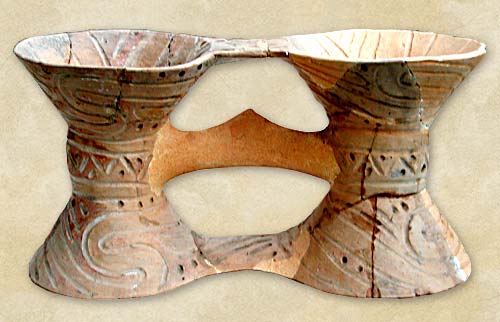
|
| |
|
| 28. Fragment of design of a painted amphora with zoomorphic representations, the Late Cucuteni-Tripolye culture |
| |
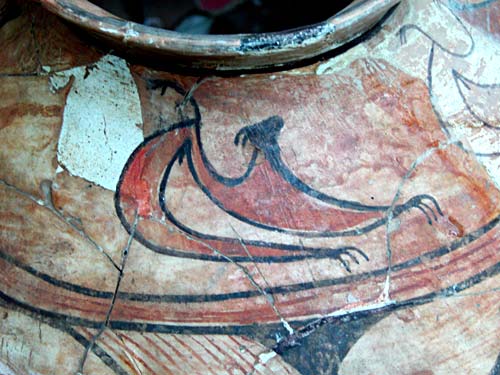
|
| |
|
| 29.Fragment of design of a painted amphora with zoomorphic representations, the Late Cucuteni-Tripolye culture |
| |
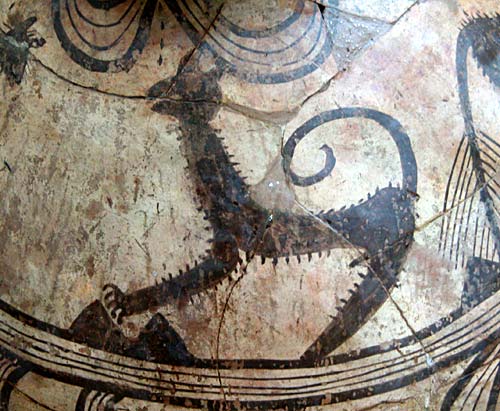
|
| |
|
| 30. Fragment of design of a painted amphora with zoomorphic representations, the Late Cucuteni-Tripolye culture |
| |
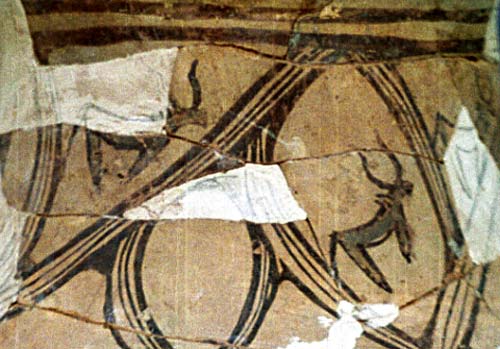
|
| |
|
| 31.Fragment of design of a painted amphora with the scene of a ritual dance, the Late Cucuteni-Tripolye culture |
| |
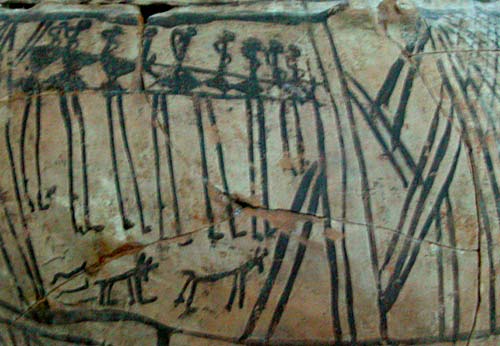
|
| |
|
| 32.Copper axe, the Late Cucuteni-Tripolye culture |
| |
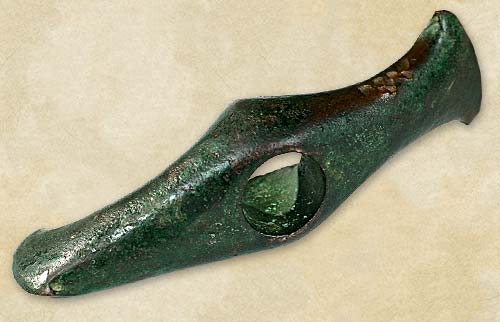
|
| |
|
| 33. Bone daggers, the Late Cucuteni-Tripolye culture |
| |
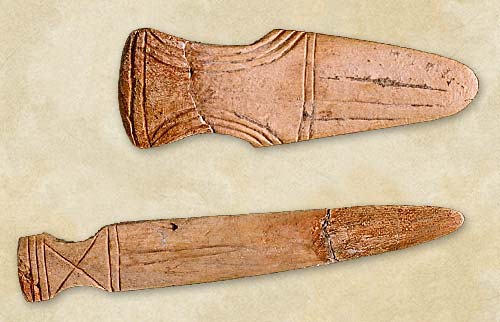
|
| |
|
|



















































































